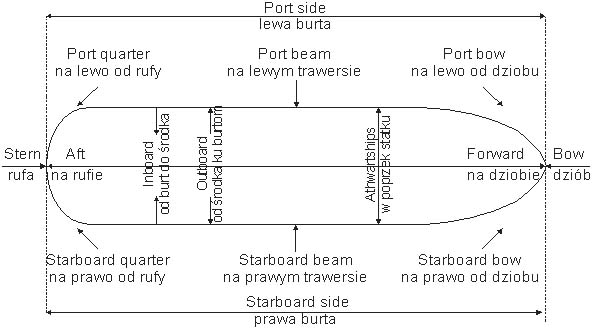Regattas provide an opportunity to see many wind-powered sailing ships. Thus, it is worth to remind you some basic terms and their definitions.
A hull is a watertight body of a ship consisting of a frame, plating, deck, and bulkheads. The most common materials used include steel, timber, and polyester-glass laminate. The hull is most commonly described using terms in the drawing below.

Sailing gear is the overall structure used to transfer wind power onto the hull. It consists of masts, rigging and sails.
Masting refers to all rigid parts of the gear used to set and control sails. In general, these are tall spars erected vertically and made of timber, metal or laminate. The masting of a sailing ship includes masts, topmasts, bowsprits, spars, gaff rigs and booms.
Rigging is the system of steel or fibre ropes and lines. These are divided into standing and running. Standing lines keep the structure rigid and position masts on the hull. Such lines are usually made of steel, chains or rods, whereas running lines are used to set and control sails. Usually, on large sailing ships, the rigging consists of a combination of steel and fibre lines.
Depending on the shape of sails and fitting, we can distinguish two basic types of rigging: square and fore-and-aft. The former usually consists of square shaped sails but there can be triangular sails as well, with the upper side of a sail fitted to a spar. The latter comprises triangular or square sails fitted along the symmetry plane of a ship with its front edge always heading towards wind. There are several types of fore-and-aft sails. The most common include Bermudian, gaff, staysail, lugsail, and spritsail.





